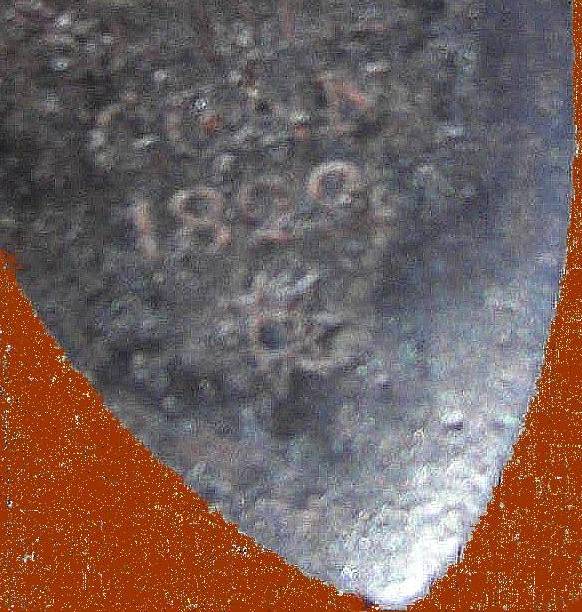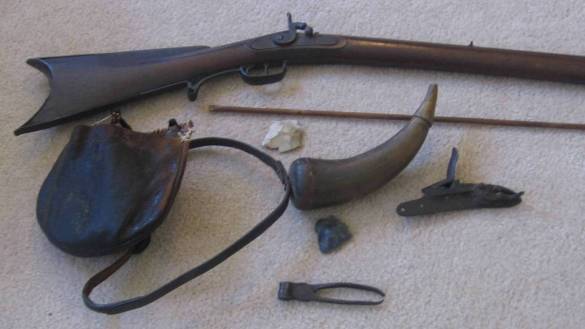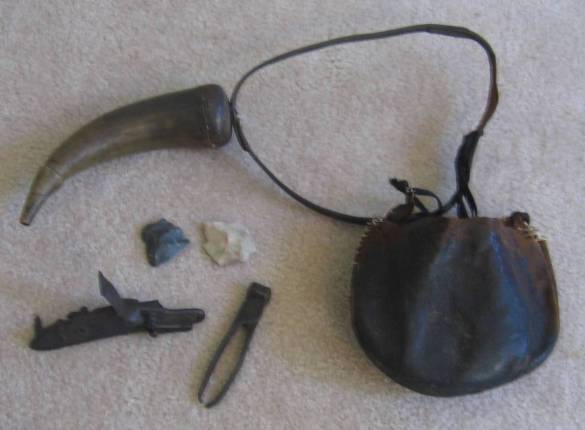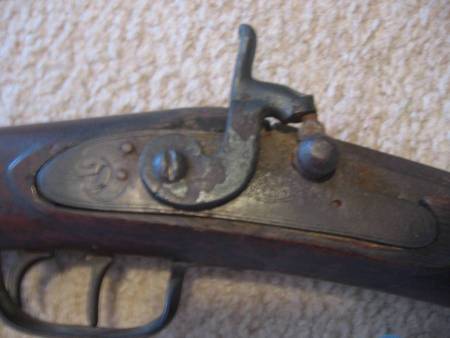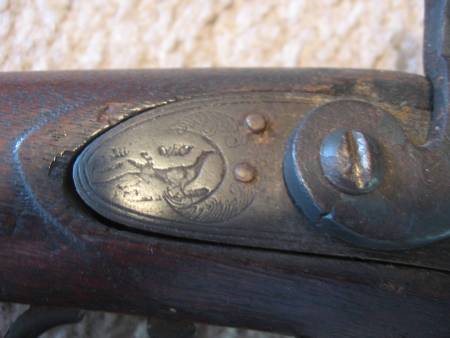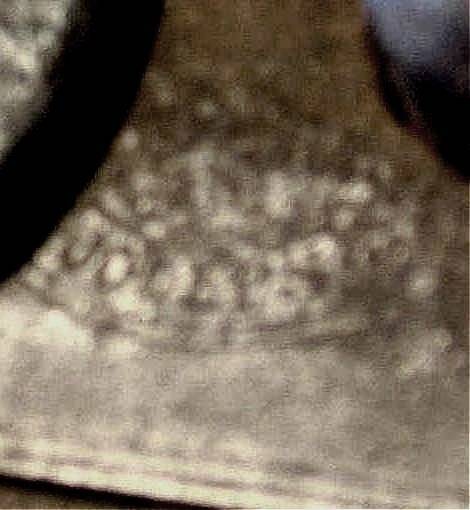|
Caplock
Rifle of Fred T. May Photo of the rifle & related items | operation of flintlock & caplock rifles |
||||
|
In December 2005 I was very fortunate to see, hold and photograph a rifle that once belonged to my great-great grandfather, Thomas May, Sr. The present owner is Bill May, a great grandson of David May [1828-1864], youngest son of Thomas May, Sr. Bill's grandfather was David's oldest son, Thomas May [1853-1933]. Thomas was only eleven years old when his father died in the Civil War. Thomas stayed on the May farm on Robinson Creek in Pike County and cared for his widowed mother, Mary Elizabeth Bickley May, until her death in 1907. He had a great interest in the history of the family and carefully preserved family possessions and records. He didn't marry until 1909 when he was 56 years old. His bride, Sarah (Sally) Little, was only 22. They had four children between 1910 and 1921. Thomas died in 1933 and Sally lived until 1965. Bill May was a young man when his grandmother died and recalls her often telling stories of the family. She identified the rifle and a gold watch as once being possessions of Thomas May, Sr. Photos taken in March 2008 | Closer look at an inscription
When Thomas May, Sr. had his will prepared by his attorney from Pikeville in July 1865, he was obviously concerned about the welfare of the family of his recently deceased son, David. Specific mention of this young family was the second item of the will. When Thomas Sr. died in 1867 the ages of David's seven living children ranged from 3 to 14. Secondly, I will to Thomas May, Alice May, Hatler May, William May [1], David May, Fanny May, Mary Elizabeth May, Children [2] of my son David May, and to Mary May his wife or widow, all the lands I own from my Randall grass field or sugar orchard up Robinson Creek and its branches, Except the piece or tract heretofore deeded by me to Thomas May, son of my son David May. It is my will that said Thomas shall have an Equal Share besides the tract heretofore deeded to him by me. So far as the said Mary, wife or widow of my dear son David, is concerned, this will is only to her a Dower interest in said land for her natural life or during her widowhood. Should she marry, it is my will that the whole of said lands go to said children.
See full text of the will of Thomas May, Sr.
Thomas May Sr.'s caplock rifle, wooden ramrod with a metal tip, powder horn. The leather pouch contained a flashpan mechanism, two flints, a bullet mold and some lead. According to a great-great grandson, Eldon May, it appears that the rifle was converted from a flintlock to a caplock rifle. As early as the 1820s such a conversion was being made by gunsmiths to make a more reliable firing mechanism. The flashpan mechanism in the pouch has an 1829 date engraved on it so Thomas probably didn't convert to a caplock rifle until the 1830s or 40s. The next time I have an opportunity, I need to photograph a closer view of the flashpan.
I returned to look again at the rifle and hunting pouch and took the following photo of the older flintlock firing mechanism. It has GUNN inscribed above the 1829 date. Below the date is a symbol of the eight points of a compass.
More about caplock rifles
Purpose of the flashpan:
|
